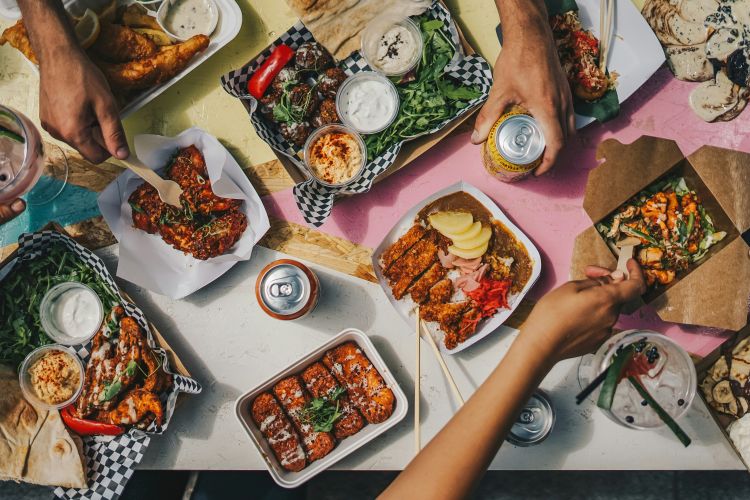Food safety tips for storing and using leftover food
It is important to know when leftover food is safe to eat and when it’s not. Keep your family safe from foodborne illness with these simple rules for handing leftovers.

After a party, family gathering, or a simple evening meal there is often some amount of leftover food. For safe use of leftovers to protect you and your family from food poisoning, follow these simple rules from the USDA Food Safety and Inspection Service.
Keep Food Out of the Danger Zone
Eat or promptly refrigerate or freeze perishable leftovers, such as salads, sandwiches, and meat. The goal is to minimize the time a food is in the "danger zone" — between 40 and 140 degrees Fahrenheit (four and 60 degrees Celsius) — when bacteria can quickly multiply. Throw away any perishable, leftover food that has been at room temperature for more than 2 hours after cooking, or 1 hour if the temperature in your home, or if you’re dining outside, is 90 degrees Fahrenheit or higher.
Cool Food Quickly
Remember to wash your hands with soap and water before handling any cooked food, especially food you store to eat later. Use clean utensils to handle the food and store it in clean containers. Do not put food back into the same container it was in before cooking, unless you have carefully cleaned the container with soap and water. If placing food on a counter or cutting board make sure it has been carefully cleaned and/or sanitized.
Place foods to be refrigerated or frozen in small, shallow containers three inches or less in height, and cover them completely. Do not stack these containers right next to other containers and leave some air space around them. This promotes rapid, even cooling of the food. Do not refrigerate or freeze cooked food in a large, deep container. The food in the center of these containers remains warm for a longer period, allowing harmful bacteria to grow. You can also cut roasts, ham, and turkey into smaller pieces, allowing them to cool faster.
Store Leftovers in the Refrigerator or Freezer
Michigan State University Extension recommends that you never taste leftovers that are of questionable age or safety. Leftovers will keep in the fridge for 3 to 4 days, or frozen 3 to 4 months. Frozen leftovers are safe indefinitely but can lose quality when frozen for longer times according to the USDA Food Safety and Inspection Service. Anytime you are in doubt about the freshness or safety of any food, dispose of it. This is especially important for leftover foods. Dispose of any potentially unsafe food in a garbage disposal or a tightly wrapped package, so that the food cannot be eaten by other people or animals.
Reheat Leftovers Safely
The USDA Food Safety and Inspection Service recommends that when you are ready to eat leftovers, reheat them on the stove, in the oven, or in the microwave until the internal temperature reaches 165 Fahrenheit (74 degrees Celsius). Soups and sauces need to be heated to a rolling boil to ensure safety. A food thermometer will help to measure the temperature of the food. Slow cookers (crock-pots) and chafing dishes are not recommended for reheating leftovers.



 Print
Print Email
Email



